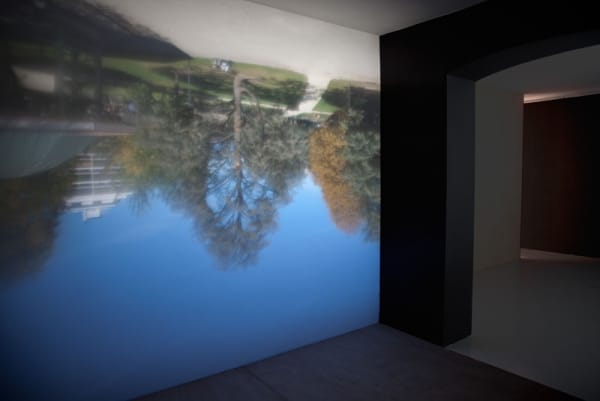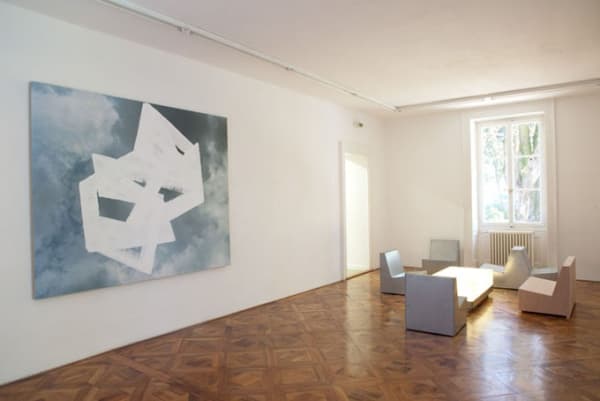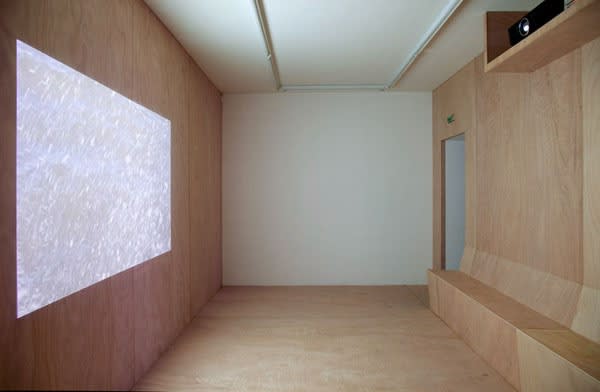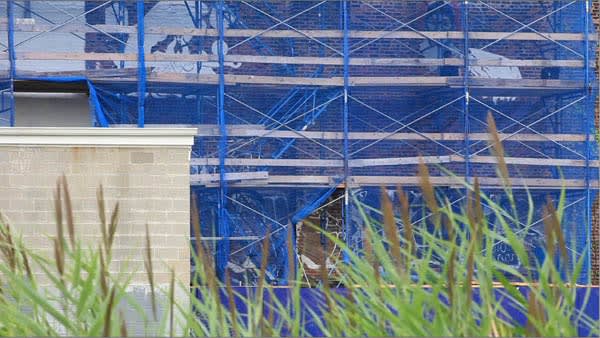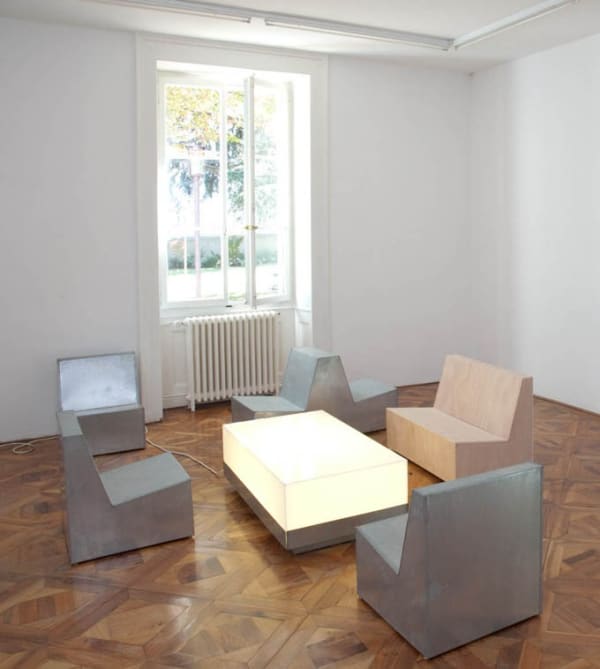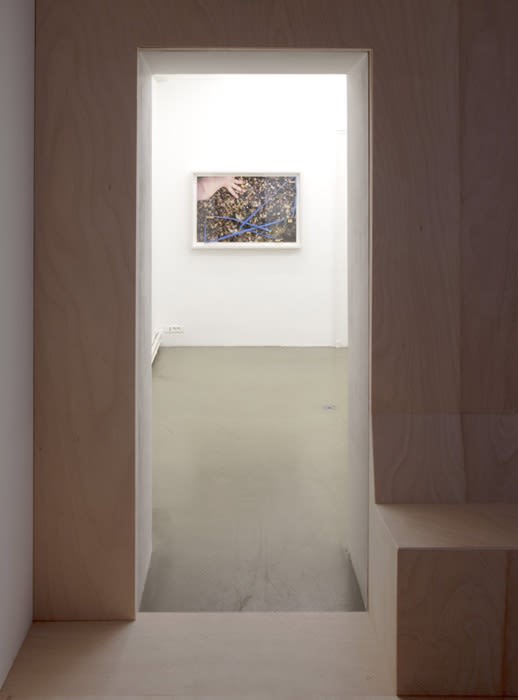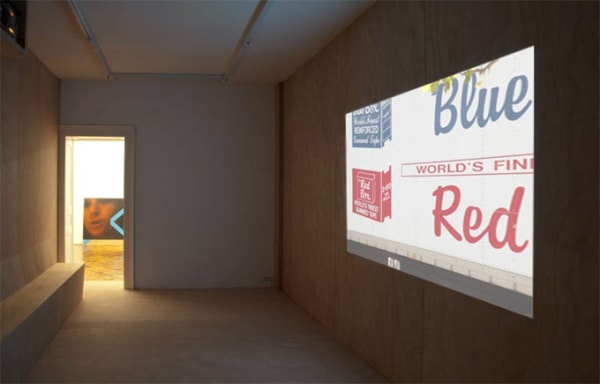Artists that have twenty or thirty years of art practice behind them almost invariably reveal and intensify their primary interests. In the case of James Hyde this would seem to both true and not true when one studies his output. There is progress but the progression seems to form an ellipse: the same calm confidence has existed in the work all along as he easily and often combines various artworks from past exhibitions with more recent ones. This takes place in Hyde's current exhibition, where he has included at least one sculptural type "Pandora", (enamel on cast aluminum hybrid) from 2003 that typically traverses the pictorial and the sculptural. What is newly revealed is that Hyde is more far-ranging investigator than many might have thought.
I first saw a James Hyde artwork at John Good Gallery in New York around 1990. I remember the object was made up of three dimly but deeply colored cement tablets placed upon on a low table-like armature. The entire assemblage could not have been more than three feet wide or high and exemplified Hyde's conceptual referent: structural extrapolation of the vacillating plane of the picture and his preferred modus operandi, pleasure-based amalgamations of various media.
I have never been able to find this piece I have described among his image inventory, but it exists powerfully in my mind. It may well be several melded together or transformed in memory. It cues one in to the mental drift accompanying an ideal state of looking, another constant theme in Hyde's work. Gerhard Richter mentions in an interview that Blinky Palermo thought that art was a whole other world. This Apollonian condition is applicable to Hyde also.
My first impression of this unidentifiable work was powerful because its form of address was through the concrete, steel and pigment it was made from. Hyde seemed to prefer not to engage the viewer with his personality, but like Donald Judd, to foreground an emotionality of materiality. Hyde distinguished himself from among the many artists of this burgeoning generation of the preceding decade for me for this reason. Hyde's succeeding exhibitions were predominately made up of constructed painting-objects: Frescoed gestures on chunks of Styrofoam, freed painterly passages of acrylic impasto gently layered inside large airless glass boxes, small paintings executed in colored tape, a bulletin board pinned to overflowing with a variety of painted, card-sized multi-colored rectangles, huge linen pillows upon which the surface held impressionistic scumbles of dusky hues.

